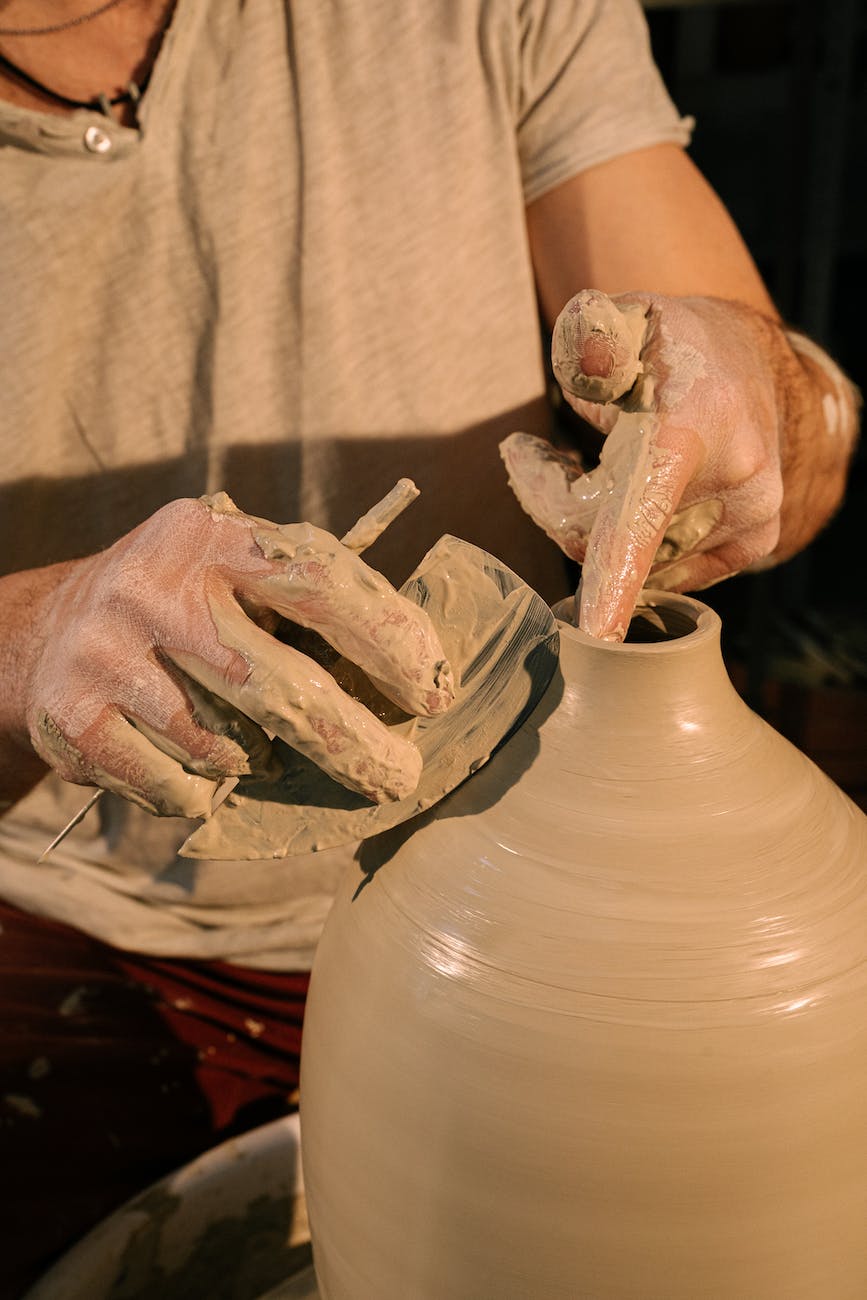Firing Up Greener Pottery: Embracing Sustainable Ceramic Arts
As environmental awareness grows, many ceramic artists adopt eco-friendly solutions while maintaining excellence. Beyond benefiting the planet, sustainable practices often provide cost savings and healthier studio conditions. With some thoughtful upgrades, potters can reduce waste dramatically while producing work responsibly.
Optimizing Kiln Energy Efficiency
Kilns require vast energy inputs, so increasing efficiency brings enormous gains. Insulating kiln exteriors, using lidded saggars, and improving door seals boost heat retention. Larger kilns fire more per BTU than small. Proper venting ensures ideal airflow. Regular maintenance keeps elements in peak shape.
Strategic firing approaches help too – grouping bisque and glaze firings, limiting unloaded reheats, programming fast ramps. Every optimization chips away at energy waste over a studio lifetime.
Building Passive Solar Kiln Alternatives
Ingenious potters construct partially underground passive solar kilns heated only by sunlight focused through angled panels. While slower, their fuel-free operation significantly lowers environmental costs while connecting pottery with natural cycles through traditional style test firings.
Exploring renewable kiln designs allows more sustainable occasional firing aligned with studio values. This preserves lower-impact heritage firing for special pieces.
Recycling Clay Endlessly
Reclaiming discarded ceramic material enables practically zero-waste production cycles. Trim scraps, flawed greenware, bone dry leather-hard clay all get reprocessed by crushing, filtering in water, and wedging to remove air bubbles. Even fired bisc ware can be recycled if ground down before rehydrating.
Closed-loop studios more resemble nature’s endless regeneration than wasteful linear progress. As creators, remaking spent materials into new life feels rejuvenating.
Responsible Use and Disposal of Chemistry
Ceramic process chemicals including glaze ingredients, stains, and cleaning solvents require conscientious handling to avoid environmental and health hazards. Proper labeling, protective gear, sealed containers, ventilation, and appropriate disposal prevent contamination.
Alternative approaches like using vegetable ash glazes or clays requiring less processing inputs lower reliance on harsh chemicals when viable. Thoughtfulness reduces pottery’s ecological toll.
Harnessing Water Thrifty Methods
Strategies for reducing water usage like reclaiming cleaning runoff, glazing without wet slips, utilizing found object texture stamps rather than wet clay, and shifting to waterless hand tools preserve an increasingly precious resource. Low flow sinks, rainwater harvesting, xeriscaping, and watchdog leak monitoring further help cut intensive studio water consumption.
Reusing and Upcycling Materials
Sustainable potters combat waste by creatively reusing and upcycling discarded materials as tooling, inlays, surface textures, or clay body inclusions. Refired ceramic shards get incorporated into new mosaic works. Salvaged metal hardware becomes decorative accents. Found object impressions add detail to plates. Thoughtful material reuse makes sustainability visible.
Firing with Renewable Fuels
Cleaner renewable energy sources like biogas, wood, and agricultural waste offer alternatives to fossil fuels for firing kilns with lower emissions. While generating enough consistent heat proves challenging, some studios blend these eco-fuels with a fraction of conventional fuels to reduce reliance and offset the balance.
Balancing Environmental Values with Studio Needs
Implementing comprehensive sustainability requires assessing multiple factors from operational costs to results quality. But embracing available greener alternatives benefits all. Creativity helps devise solutions tailored to individual studio needs while benefiting the wider interconnected community. Care for immediate environment blossoms into care for the planet.
